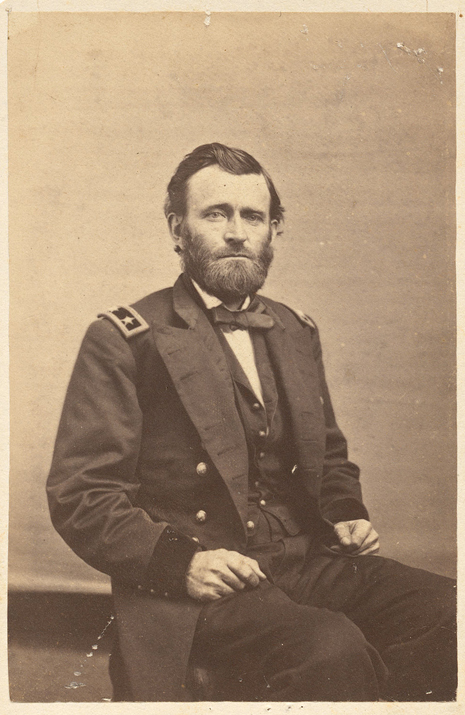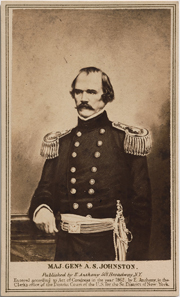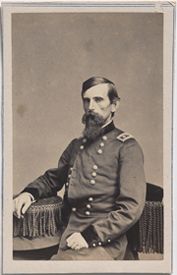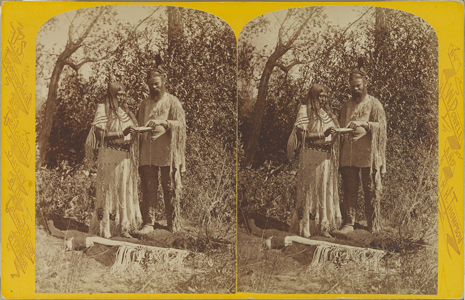The Battle of Shiloh, April 6-7, 1862

Like so many of our nation’s battlefields that have been preserved and maintained by the United States National Park Service, Shiloh, located in southwest Tennessee, is a place of great beauty and peace. However, like all battlefields, Shiloh is a place where armies were embroiled in an awful and bloody struggle, where men fought close and died close, and where many men and boys gathered their last views of life amidst smoke, screams, and horror. For all of the peace and the pastoral beauty that Shiloh exudes today, it is difficult to believe that for two days in 1862 it was a hellish place.
For his victorious work at Forts Henry and Donelson, General Ulysses Grant (above) was given a large command, and while waiting for troops under General Don Carlos Buell to reinforce him, he began to occupy the site at Pittsburg Landing on the Tennessee River. A small country church nearby was named Shiloh, from whence the ensuing battle derived its name. On what would have otherwise been a typical coupling of sunny and rainy spring days in a verdant southern setting, many soldiers and officers of immense talent were deployed on a battlefield that would yield almost 24,000 casualties—killed, missing, and wounded.

Albumen silver print, 1862 / National Portrait
Gallery, Smithsonian Institution
Confederate generals Albert Sidney Johnston (right) and Pierre Gustave Toutant Beauregard jointly attacked Grant’s forces early on the morning of April 6. While the initial assault on the Federal troops camped at Pittsburg Landing came as a surprise, Grant’s troops were able to hold off the Confederates until the following day, when Buell’s troops arrived to reinforce Grant and his men. Before the day was done, Johnston would bleed to death from a bullet to his right leg.
Among Grant’s generals on the field at Shiloh were two Wallaces—no relation—W. H. L. Wallace, and Lew Wallace. W. H. L. Wallace would lose his life as a result of wounds from the battle, while Lew Wallace, failing to reinforce William T. Sherman’s troops in a timely fashion, would be partially blamed for Union losses on the battle’s first day.

Fredricks / Albumen silver print, c. 1862 /
National Portrait Gallery, Smithsonian
Institution; gift of Mrs. F.B. Wilde
Lew Wallace (left) would serve the United States government for many years after Shiloh, both as a diplomat and statesman. He never received full credit for his generalship, however, even though a strong possibility existed that he had received nebulous orders from General Grant that caused the errors on the battlefield. However, Lew Wallace is not so much remembered for his service to his country as he is for his single great literary accomplishment: Wallace authored the historical novel Ben Hur.
Another participant of note in the Battle of Shiloh was the young schoolteacher John Wesley Powell. Powell was an anomaly among the troops of either army. He could read and write, and he was also schooled in Latin and Greek. Powell was hit in the right arm while commanding a battery of cannon, and W. H. L. Wallace, doomed to be struck down that afternoon, gave his horse to Powell in order for him to seek medical aid.
Powell later explored the American West, led the United States Geological Survey, worked as an ethnologist for the Smithsonian, and co-founded one of Washington, D.C.’s most famous intellectual institutions, the Cosmos Club. Powell accomplished all of this with a stunning impediment; his right arm was amputated as a result of the wound he received at Shiloh..

With reinforcements at hand, Grant was able to overturn the southern advances made on April 6 the next day and secure a bloody victory, if only because the southern army was compelled to leave the field and retreat to Corinth, Mississippi. Civil War historian Shelby Foote summarizes the battle:
Union losses were 1754 killed, 8408 wounded, 2885 captured: total, 13,047—about 2000 of them Buell’s. Confederate losses were 1723 killed, 8012 wounded, 959 missing: total, 10,694. Of the 100,000 soldiers engaged in this first great bloody conflict of the war, approximately one out of every four who had gone into battle had been killed, wounded, or captured. Casualties were 24 percent, the same as Waterloo’s. Yet Waterloo had settled something, while this one apparently had settled nothing.
And while this fight may have settled nothing immediately, this thin victory and southern capitulation would provide the Federal army with a keen path toward the surrender of Vicksburg, Mississippi, in the summer of 1863, at which time the western theater of the Deep South would be effectively removed from the war.
—Warren Perry, Catalog of American Portraits, National Portrait GallerCited:
Shelby Foote, The Civil War: A Narrative (New York: Random House, 1958).